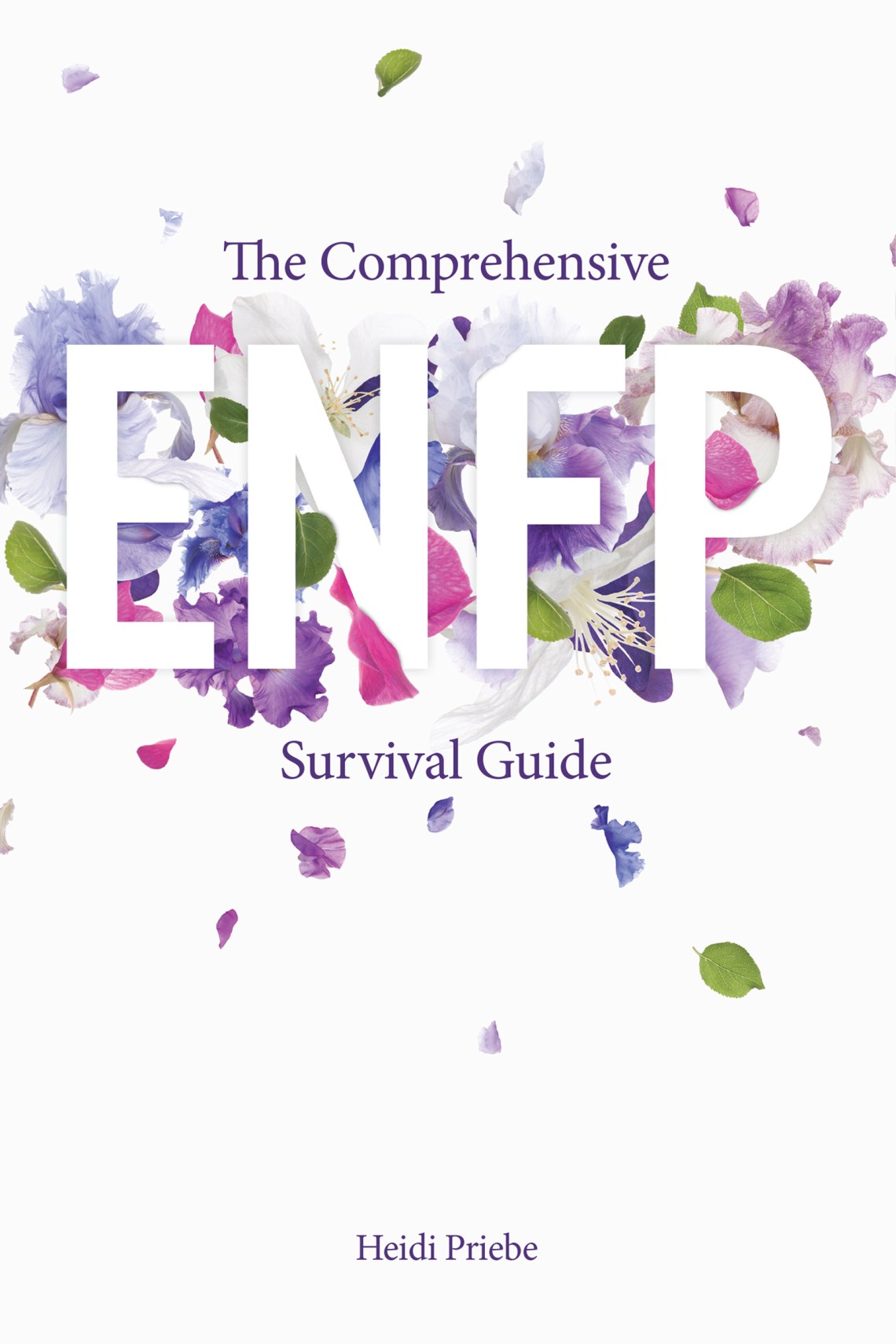
How Each Cognitive Function Manifests Based On Its Position In Your Stacking
Inferior introverted sensing originally manifests as a resistance to tradition or conformity of any sort.
By ![]() Heidi Priebe
Heidi Priebe
Attempting to determine which cognitive functions you use within the MBTI system can be a tricky process. We are usually highly aware of our dominant and auxiliary function, but struggle to identify our tertiary and inferior functions – and there are two simple reasons for this.
The first reason is that our tertiary function doesn’t begin developing in a recognizable way until we are well into our twenties. Our inferior, on the other hand, takes until approximately middle age to develop fully. Attempting to identify one’s tertiary or inferior function before at the age of at least thirty is likely to result in a great deal of confusion and misidentification.
The second – and perhaps most prominent reason – is that the expression of our tertiary and inferior functions are warped by the expression of our dominant and auxiliary functions. Extroverted feeling looks very different in an ISTP than it does in an ENFJ. In fact, we often spend the first few decades of our lives rebelling against our inferior function – causing us to believe that we don’t possess it at all.
Below, we’ll take a look at what each cognitive function looks like in each possible position in one’s stacking. If you already know your four-letter MBTI type and want to learn which functions you possess (and where they appear in your stacking), click here.
Extroverted Intuition (Ne)

Dominant Extroverted Intuition:
As a dominant function, Ne manifests as a seemingly never-ending plethora of theories, possibilities and inventive ideas that the user is constantly picking up on.
The dominant-Ne monologue: “I am swimming in an endless sea of possibilities about what to do/experience/think about next and I want to try them all.”
Auxiliary Extroverted Intuition:
Auxiliary Ne manifests as a plethora of possibilities that arise to support or expand upon a thought or decision that the user has come to.
The auxiliary-Ne monologue: “I see a million different ways to look at the concept I’ve been analyzing and I want to consider them all.”
Tertiary Extroverted Intuition:
Tertiary Ne manifests as a series of creative solutions that may go into solving a given problem or moving them towards a goal.
The tertiary-Ne monologue: “I will consider which possibilities will best help me accomplish the goal I have set.”
Inferior Extroverted Intuition:
Inferior Ne originally manifests as a reluctance to try new ways of doing things, occasionally giving way to anxiety over the unknown.
As Ne matures, its user will become more comfortable dwelling in uncertainties and entertaining new possibilities.
The inferior-Ne monologue (prior to maturation): “It is best to stick to the most reliable methods of getting things done. There is no sense getting lost in a sea of unpredictable possibilities.”
Introverted Intuition (Ni)

Dominant Introverted Intuition:
As a dominant function, Ni manifests as a keen perception for the meaningful connections that exist between the thoughts, concepts, events and occurrences in the Ni-user’s environment.
The dominant-Ni monologue:“Everything is interconnected and I must determine the meaning and implication behind those connections.”
Auxiliary Introverted Intuition
As an auxiliary function, Ni manifests as an understanding of how one ought to go about accomplishing his or her goals, based on a keen intuitive perception of how various courses of action are likely to unfold.
The auxiliary-Ni monologue: “How can I use my intuitive knowledge about how things are connected in order to achieve what I want?”
Tertiary Introverted Intuition
As a tertiary function, Ni manifests as the desire to optimize or perfect upon one’s pre-existing talents or skills.
The tertiary-Ni monologue: “How can I improve upon – or even perfect – the approach that I regularly take toward my main passion or interest?”
Inferior Introverted Intuition
As an inferior function, Ni originally manifests as a scorn or distaste for over-analyzing what is obvious or over-planning for the future.
As inferior introverted intuition matures, the user may find themselves developing a keen ‘hunch’ for the way things are bound to unfold in the future and will enjoy entertaining these ideas.
The inferior-Ni monologue (prior to maturation):“Everyone needs to stop over-analyzing everything, the answers are literally right in front of us.”
Extroverted Sensing (Se)

As a dominant function, Se manifests as the desire to engage fully with the sensory aspects of one’s environment, without any restraint or pause for analysis.
The dominant-Se monologue: “I want to sample all of the experiences that are immediately available to me and see where those experiences lead me!”
As an auxiliary function, Se manifests as the desire to experience and experiment with the sensory aspects that the user has determined to be the most enjoyable or useful.
The auxiliary-Se monologue: “I want to go live out the experiences that I have determined to be the best or most enjoyable and see what happens as a result.”
As a tertiary function, extroverted sensing manifests as the user’s ability to pick up cues from their external environment and react to them with a sense of natural confidence.
The tertiary-Se monologue: “I prefer to plan ahead, but when necessary, I can think surprisingly well on my feet, as I feel in tune with what is going on around me.”
As an inferior function, Se originally manifests as a distrust of the physical world that surrounds its user, or the pervasive belief that one’s intellect can and must be trusted above the sensory information that is available.
As Se matures, the user may find themselves feeling steadily more in tune with the sensory world that surrounds them, and more able to trust it as a pervasive force.
The inferior-Se monologue (prior to maturation): “I must analyze all possible outcomes of a sensory experience, as the physical world is subject to change unexpectedly, at any time.”
Introverted Sensing (Si)

As a dominant function, Si manifests as a powerful memory for what has worked well in the past, and the desire to structure one’s life around the traditions and positive outcomes of past experiences.
The dominant-Si monologue:“I prefer to plan the majority of my life around the traditional or tried-and-true methods of doing things, as they have proven to be the most reliable.”
Auxiliary Introverted Sensing:
As an auxiliary function, Si manifests as the preference to rely on the tried-and-true method when working to accomplish a particular goal.
The auxiliary-Si monologue:“In order to achieve what I want, I will employ the most reliable and socially acceptable method of accomplishing it.”
As a tertiary function, introverted sensing manifests as a proneness to nostalgia, as well as a method of contrasting the new and exciting with the old and the known.
The tertiary-Si monologue:“I will examine how my new experience or theory sizes up against my past experiences or way of understanding the world.”
As an inferior function, introverted sensing originally manifests as a resistance to tradition or conformity of any sort.
As Si matures, the user will find themselves steadily more able to determine when traditional methods are useful in accomplishing their goals and when they are not, and will begin to feel comfortable integrating tried-and-true methods into their experiences as they see fit.
The inferior-Si monologue (prior to maturation): “Out with the old, in with the new! F*ck the system! The man can’t keep me down!”
Extroverted Thinking (Te)

Dominant Extroverted Thinking:
As a dominant function, Te manifests as the ability to clearly envision the most effective outcome to any given situation or problem and the ability to set the corresponding plans into action.
The dominant-Te monologue: “I will achieve my goal by any means necessary.”
Auxiliary Extroverted Thinking:
As an auxiliary function, Te manifests as the ability to take concrete, efficient action on the user’s analysis of what the best thing to do would be.
The auxiliary-Te monologue: “Now that I have determined the best or most reliable course of action, I will set it into motion using the most straightforward method available to me.”
Tertiary Extroverted Thinking:
As a tertiary function, Te manifests as the ability to source whichever resources are necessary to make the user’s desire a reality.
The tertiary-Te monologue: “I will employ the most straightforward method that exists in order to make my goal, dream or impulse come true.”
Inferior Extroverted Thinking:
As an inferior function, Te originally manifests as the inability to set one’s external desires or plans into motion.
As Te matures, the user finds themselves steadily more able to source the resources they require to make their dreams a reality. They also find themselves developing the ability to express their thoughts to others in a straightforward, logical manner.
The inferior-Te monologue (prior to maturation): “I have many goals I want to accomplish but often have trouble tangibly setting them into motion. I fear being perceived as incompetent by others.”
Introverted Thinking (Ti)

As a dominant function, Ti manifests as the constant identification of logical patterns that exist in ones external environment as well as a keen perception for any deviations from those patterns.
The dominant-Ti monologue: “I must figure out exactly how everything logistically works in relation to everything else.”
Auxiliary Introverted Thinking:
As an auxiliary function, Ti manifests as the identification of how the logical systems in the user’s external environment could be manipulated to work to their advantage.
The auxiliary-Ti monologue: “How can I manipulate the way that this object or situation works so that it instead works the way I’d like it to?”
Tertiary Introverted Thinking:
As an auxiliary function, Ti manifests as the organization of the user’s pre-existing knowledge in a logical, systematic format.
The tertiary-Ti monologue: Where does this new hunch or piece of information I’ve acquired fit in relation to what I already know to be true?
Inferior Introverted Thinking:
As an inferior function, introverted thinking originally manifests as an excessively critical view of others, as it searches for objective (and often harsh) truths about other people.
As Ti matures, the user will find themselves using the objective truths they pick up on about others to nurture and guide others in a positive fashion, rather than manipulating them for their own gain.
The inferior-Ti monologue (prior to maturation): “Can I use these objective observations about others to my advantage?”
Extroverted Feeling (Fe)

As a dominant function, Fe seeks to identify what is moral by identifying what those around them value, and then to enforce those values as a measure of keeping the peace in their external environment.
The dominant-Fe monologue: “I will make those around me feel comfortable and happy in a cohesive manner, by identifying what we are all mutually striving for.”
Auxiliary Extroverted Feeling:
As an auxiliary function, Fe manifests as the urge to apply one’s understanding of a given situation in a way that will satisfy the needs and desires of others.
The auxiliary-Fe monologue: “I will analyze the information that is available to me and then see how I can use it to achieve interpersonal peace.”
As a tertiary function, Fe manifests as the ability to pick up on the motivations and emotions of those around the user. The immature Fe user may then take advantage of those feelings by manipulating them in a way that supports his or her own ends. The mature tertiary Fe user will search for a means of incorporating the needs of others into their personal plans and actions.
The tertiary-Fe monologue (prior to maturation): “I will assess the feelings of those around me to determine whether or not I can get what I want from them.”
As an inferior function, Fe originally manifests as the user being reluctant to dabble with or express emotional concerns, as the user cannot logically make sense of many of his or her own emotions and therefore doesn’t feel confident in moderating them.
As Fe matures, its user will feel increasingly comfortable making and keeping emotional commitments to others, as they grow more confident in what is expected of them.
The inferior-Fe monologue (prior to maturation): “Feelings make me freeze with anxiety because I don’t know how to moderate them. I am terrified of accidentally offending someone.”
Introverted Feeling (Fi)

As a dominant function, Fi manifests as a moral compass that points its user toward the direction they ought to explore next, based on how they feel about the information at hand.
The dominant-Fi monologue:“I must decide how I feel and where I stand on these issues before coming to a conclusion about what to do.”
Auxiliary Introverted Feeling:
As an auxiliary function, Fi manifests as a method of reflecting on and assessing how the user feels about his or her past actions.
The auxiliary-Fi monologue: “I need to isolate myself to process how I feel about the activities I’ve been engaging in lately and decide whether or not to keep doing them.”
As a tertiary function, Fi manifests as strong, unwavering set of morals and values which the user draws upon to dictate many of their major decisions.
The tertiary Fi monologue: “I must adhere to my values and morals at all costs – even if doing so is unpleasant.”
As an inferior function, Fi manifests as a general disdain for emotional expression and a fear of being perceived as ‘weak’ by others.
As Fi matures, its user will begin to identify the role their own personal morals play in their lives, and allow those morals to take on a greater role in their decision-making process.
The inferior-Fi monologue (prior to maturation): “Feelings are for the weak. I have no time to attend to such trivial matters in either myself or others.”
The Cognitive Stacking Of Each Type:
ENFP:
Dominant Extroverted Intuition – Auxiliary Introverted Feeling – Tertiary Extroverted Thinking – Inferior Introverted Sensing
INFP:
Dominant Introverted Feeling – Auxiliary Extroverted Intuition – Tertiary Introverted Sensing – Inferior Extroverted Thinking
ENFJ:
Dominant Extroverted Feeling – Auxiliary Introverted Intuition – Tertiary Extroverted Sensing – Inferior Introverted Thinking
INFJ:
Dominant Introverted Intuition – Auxiliary Extroverted Feeling – Tertiary Introverted Thinking – Inferior Extroverted Sensing
ISTJ:
Dominant Introverted Sensing – Auxiliary Extroverted Thinking – Tertiary Introverted Feeling – Inferior Extroverted Intuition
ESTJ:
Dominant Extroverted Thinking – Auxiliary Introverted Sensing – Tertiary Extroverted Intuition – Inferior Introverted Feeling
ISFJ:
Dominant Introverted Sensing – Auxiliary Extroverted Feeling – Tertiary Introverted Thinking – Inferior Extroverted Intuition
ESFJ:
Dominant Extroverted Feeling – Auxiliary Introverted Sensing – Tertiary Extroverted Intuition – Inferior Introverted Thinking
ESTP:
Dominant Extroverted Sensing – Auxiliary Introverted Thinking – Tertiary Extroverted Feeling – Inferior Introverted Intuition
ISTP:
Dominant Introverted Thinking – Auxiliary Extroverted Sensing – Tertiary Introverted Intuition – Inferior Extroverted Feeling
ESFP:
Dominant Extroverted Sensing – Auxiliary Introverted Feeling – Tertiary Extroverted Thinking – Inferior Introverted Intuition
ISFP:
Dominant Introverted Feeling – Auxiliary Extroverted Sensing – Tertiary Introverted Intuition – Inferior Extroverted Thinking
INTJ:
Dominant Introverted Intuition – Auxiliary Extroverted Thinking – Tertiary Introverted Feeling – Inferior Extroverted Sensing
ENTJ:
Dominant Extroverted Thinking – Auxiliary Introverted Intuition – Tertiary Extroverted Sensing – Inferior Introverted Feeling
ENTP:
Dominant Extroverted Intuition – Auxiliary Introverted Thinking – Tertiary Extroverted Feeling – Inferior Introverted Sensing
INTP:
Dominant Introverted Thinking – Auxiliary Extroverted Intuition – Tertiary Introverted Sensing – Inferior Extroverted Feeling ![]()
Heidi Priebe explains how to manage the ups, downs and inside-outs of everyday life as an ENFP in her book available here.












